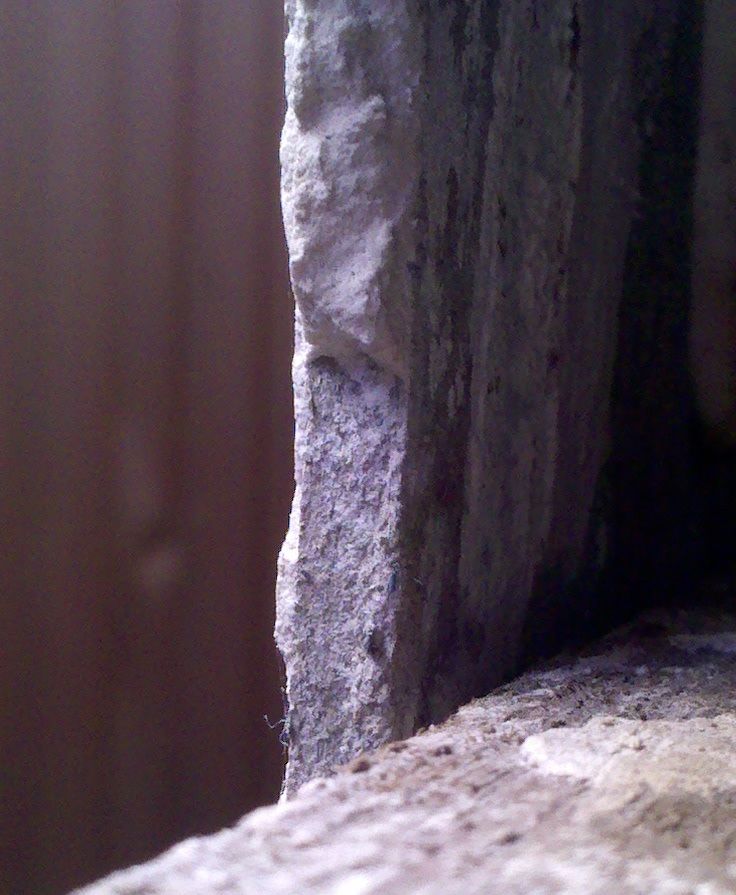
Everyone knows that disturbing asbestos containing materials can be dangerous, but what constitutes disturbance? Are you disturbing asbestos by dusting or sweeping? Are the cracks in the ceiling a risk to my health? In order to answer these questions we must first explain what asbestos is.
What is Asbestos?
Asbestos is a fibre, a naturally occurring mineral which was used for its heat resistance, flame resistance, chemical resistance, water resistance and tensile strength. Most often in Australia it was added to cement to create wall and roof panels, such as the commonly known ‘super six’. The asbestos is found inside the product and there it will remain until someone or something enables it to come out.
Exposed edges of asbestos containing materials are often viewed with concern. Sometimes it is even possible to see the asbestos fibres along these edges. However, without a physical disturbance these fibres, visible or not, will not likely become air borne that is easily inhaled. It is often recommended that exposed edges or cracks are encapsulated (painted or otherwise sealed), this is a measure taken to reduce the chance that damage to the material will cause the release of fibres, rather than a required safety measure.
Illegal disturbance of Asbestos
In Victoria and Western Australia, the Occupational Health and Safety Regulations 2007 prohibit the use of the following tools or instruments on asbestos unless the use is controlled:
- A broom
- A brush
- A high pressure water jet, power tool or other similar tool or instrument
All other states operating under the Work Health and Safety Regulation 2011 completely prohibits the use of the use following on asbestos:
- High pressure water spray
- Compressed air
The following equipment use is prohibited for use on asbestos unless the use is controlled:
- Power tools
- Brooms
- Any other implements that cause the release of airborne asbestos into the atmosphere
The use of these implements is considered controlled if the equipment is enclosed, designed to capture or supress airborne asbestos or used in a manner which is designed to capture or supress airborne asbestos.
Everyday disturbance of Asbestos
It is possible to disturb asbestos containing materials through activities other than those mentioned above. For example, a door handle repeatedly hitting an asbestos cement wall has the potential to damage the material sufficiently to release airborne asbestos fibres. Sanding is one particularly risky activity with significant potential to release fibres, as is sawing or drilling.
As a broad statement, any activity which may physical change the state of the material from its current condition into a dust has the potential to release fibres. Asbestos air monitoring can be conducted to assess the airborne fibre concentration to ensure that it is below the detectable limit of 0.01 f/mL.
Disturbed Asbestos Materials and Need it Checked?
Before you perform any activity which may generate dust from a material first determine if it contains asbestos. This can be done by contacting one of our consultants in Melbourne of Sydney to arrange for asbestos testing of a sample.
Author: Amy Morris

Email: Melbourne@AsbestosTesting.com.au
Amy Morris is a Property Risk Assessor at Safe Environments Victoria with a Bachelor of Science (Forensic Science) and associated Biology major and Forensic Chemistry sub-major. Having worked both nationally and internationally in her field Amy is familiar with current standards and legislation for asbestos and other hazardous substances. Trained under Safe Environments NATA endorsed training program she regularly conducts residential and commercial asbestos inspections and provides consulting services to individuals and companies.

